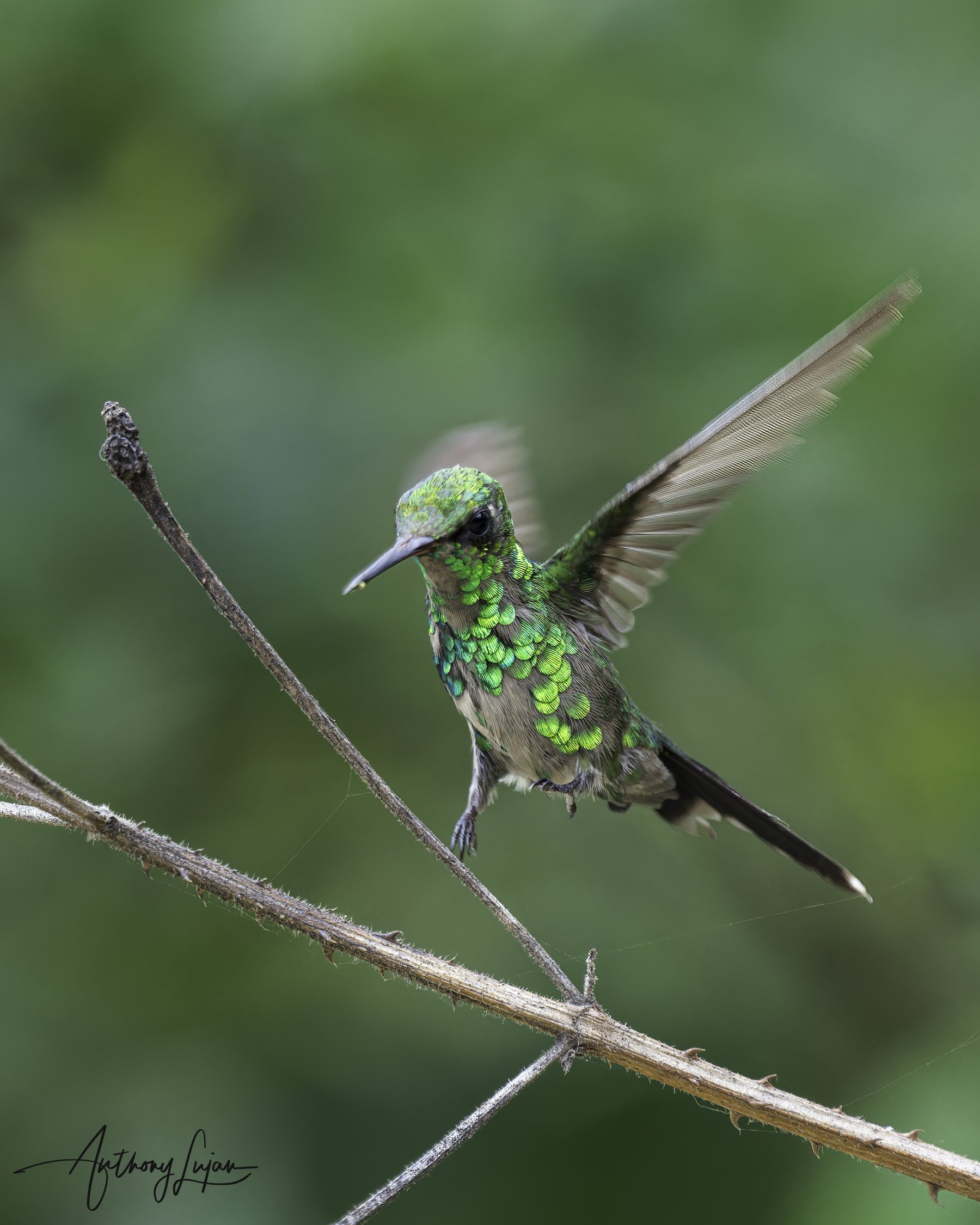Golden-crowned Emerald
Golden-crowned Emerald (Cynanthus auriceps)
Name Origin:
The genus Cynanthus derives from Greek kynos (“dog”) and anthos (“flower”), referencing the bird’s habit of “hunting flowers” for nectar. The species name auriceps means “golden-headed” (aurum = gold, ceps = head), describing the male’s striking golden crown.
Quick Facts
🪶 Length: 8.5–9.5 cm (3.3–3.7 in)
⚖️ Weight: 2.5–3.0 g (0.09–0.11 oz)
🌎 Range: Endemic to western Mexico
🧭 Elevation: 300–1,800 m (980–5,900 ft)
🌸 Diet: Nectar and small insects
🏡 Habitat: Dry forest, arid scrub, and foothill woodland
🧬 Clade: Trochilini “Emeralds” (lowland and arid-habitat hummingbirds)
📊 Status: Least Concern (IUCN 2024)
Subspecies & Distribution
Monotypic species — no recognized subspecies.
Distribution: Endemic to western Mexico, occurring from southern Sonora and Chihuahua south through Nayarit, Jalisco, Colima, and Michoacán. It inhabits dry deciduous forest, arid scrub, and foothill woodland, often near flowering trees such as Erythrina, Inga, and Calliandra.
Species Overview
The Golden-crowned Emerald is one of Mexico’s most striking endemic hummingbirds, noted for its shimmering golden crown and metallic green body. It is often seen flitting among flowering shrubs in dry tropical forests and thornscrub. Closely related to the Broad-billed Hummingbird, it replaces that species along the Pacific slope.
Male Description:
The male has a brilliant golden-green crown, shining emerald upperparts and throat, and a bluish tail with dark violet tips. The underparts are metallic green with a golden sheen, and the bill is red with a black tip.
Female Description:
The female has green upperparts, grayish-white underparts, and a dark blue-green tail with white tips. She lacks the golden crown but maintains a soft iridescent green gloss on the head and back.
Habitat & Behavior:
Occurs primarily in dry deciduous forest, tropical scrub, and thorny woodland, often between 300 and 1,800 meters elevation. Feeds on nectar from Heliconia, Ipomoea, Calliandra, and other tubular flowers. The Golden-crowned Emerald is active and territorial, frequently perching in open areas while defending its feeding sites.
Conservation Note:
The Golden-crowned Emerald is listed as Least Concern by the IUCN and remains locally common within its restricted range. It tolerates disturbed habitats, often appearing in gardens and roadside flowering shrubs. Nonetheless, deforestation and agricultural expansion in Mexico’s Pacific foothills continue to fragment its habitat. Conservation of tropical dry forest ecosystems, particularly in Nayarit and Jalisco, is essential for the long-term survival of this beautiful Trochilini endemic.


